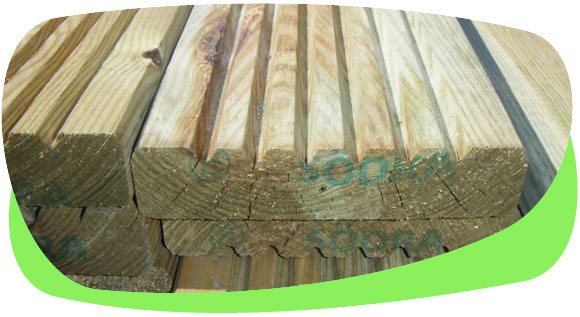Avoid toxic products
One of the best ways to put yourself off using many DIY products is to look at the packet – the recommended precautions can read like a horror story.
If you really need to use them, always protect yourself; use sparingly; store carefully (remember where you put the old container, so you won’t have to buy more next time!); and dispose of as responsibly as you can.
However, avoiding toxic products is becoming easier as the range of green DIY products available is expanding. Green DIY suppliers offer not only a good range of products but also advice and information on the products and their use.
Particular hazards:
- PVC is a toxic carcinogen, and a source of hormone-disrupting chemicals. It is used in a vast range of products, including wallpapers, shower curtains, water pipes and packaging.
- MDF – Medium Density Fibreboard – is a bland, versatile, easy-to-use indoor DIY material. It’s also a major health hazard. It contains urea formaldehyde, and the fibrous dust produced when cutting and sanding MDF is very dangerous, causing irritation to eyes and lungs. Proper ventilation, facemasks and goggles are essential when working with it. Formaldehyde can be released throughout the life of this product – it’s toxic through and through. DO NOT BURN!
- Fibreglass and fibreglass-type products: the resin is toxic, the dust is a vicious irritant. And yet it’s a fantastically versatile material, with uses from whole boats to car body filler. Is there an alternative, more benign product for the job you want to do?

- Wooden products are often tanalised – impregnated under pressure with highly toxic substances such as arsenic – to protect against rot. Look for a pale green stain soaked into the outer layer, typically on roughly sawn softwood which otherwise wouldn’t last any time at all outside in the wet. We advise against buying such products: at the very least, DON’T BURN THEM! Burning tanalised wood releases arsenic, a cumulative poison, into your immediate atmosphere.
- Conventional wood preservatives are highly toxic, especially to aquatic life. Boron is an alternative for protecting timber against rot and insect attack: because it is water-soluble it can be formulated to penetrate wood without using toxic solvents.
- Many timber treatments are toxic to human beings and pets – and loft-dwelling bats – as well as to their intended targets. Dry rot, wet rot and woodworm need a suitably damp habitat to survive and thrive, the Pesticide Action Network explains; ‘Solve your damp problem and you have gone a long way to solving your pest problem.’
- Paintstrippers, coatings removers, brush cleaners etc. usually contain vicious solvents: product labels warn of ‘irreversible effects’. ‘I just do not understand why these dangerous products are still being sold over-the-counter to consumers, who often do not read the warning labels on the tin,’ says Ivor Chivers, founder of Eco Solutions, which manufactures safe, water-based alternatives. The products were developed in response to the high turnover of employees and frequent complaints of headaches in a professional coatings removal business.
- Paint is such a ubiquitous and hazardous DIY staple that it deserves a whole section by itself.
Disposing of DIY residues
Contact your local authority for advice on disposal of oil, paint, chemicals, batteries, unused fibreglass resin, glue, solvents and other toxic DIY waste.
In some areas, old paint can be recycled via the Community RePaint scheme, which redistributes leftover reusable paint to community groups and projects.
- Most products are less toxic once they have ‘set’ – in the case of fibreglass resin it is best to mix the two components before disposal (though beware of excess heat production!).
- NEVER burn tanalised timber (see above), old painted timber, or boards which contain formaldehyde resins (i.e. most plywoods, chipboard, and mdf).